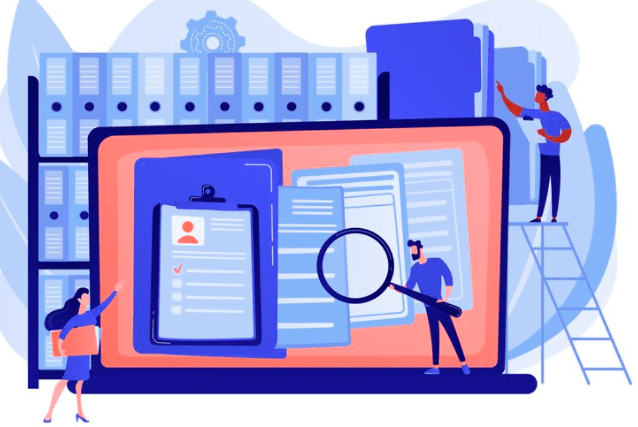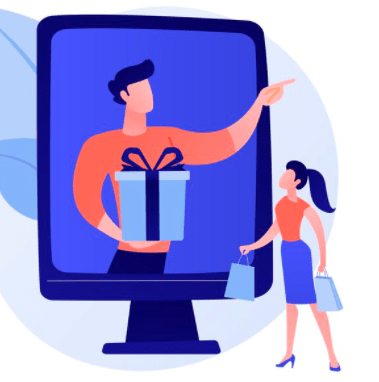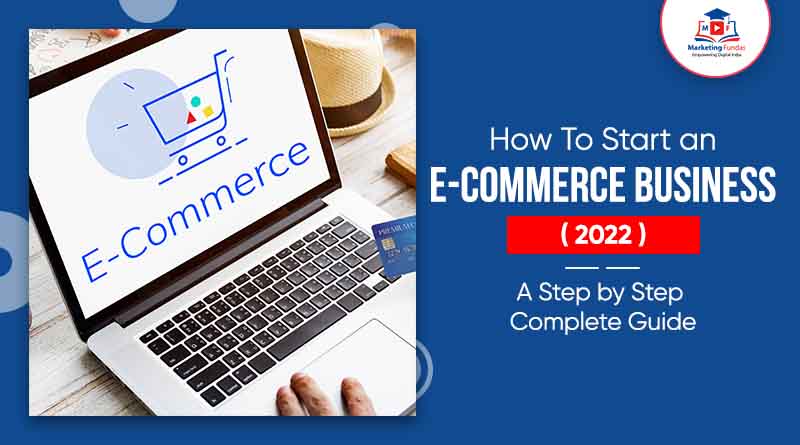The e-commerce sector is expanding at a breakneck pace. Stores that have been closed for a short period of time may never reopen. The recent pandemic provided a boost, accelerating eCommerce development by five years. There’s never been a better time to launch an online business.
According to research, by 2023, 22% of all retail transactions will be conducted online. If your company isn’t yet online, it’s time to pick up the pace and launch your own eCommerce venture. Shopping online used to be a luxury and a convenience but today it’s a necessity.
Have a look at what this guide entails
What is Ecommerce?

Ecommerce, also known as electronic commerce or internet commerce, is the buying and selling of products and services over the internet. Ecommerce is frequently used to refer to the online sale of physical goods, but it can also refer to any type of commercial transaction that is made possible by the internet.
Ecommerce, also known as electronic commerce or internet commerce, is the buying and selling of products and services over the internet. Ecommerce is frequently used to refer to the online sale of physical goods, but it can also refer to any type of commercial transaction that is made possible by the internet.
Types of Ecommerce Models
There are four primary types of e-commerce models that can describe almost every transaction that takes place between businesses and consumers.
Business to Consumer (B2C):
When a company sells a product or service to a single customer (e.g., you buy a pair of shoes from an online retailer).
- Amazon
- Flipkart
- Nykaa
Business to Business (B2B):
When a company sells a product or service to another company (e.g., a business sells software-as-a-service for other businesses to use),
- IndiaMart
- Alibaba
Consumer to Business (C2B):
When a customer sells his or her own products or services to a company or organisation (e.g., an influencer offers exposure to their online audience in exchange for a fee, or a photographer licences their photo for a business to use).
- Upwork
- Fiverr
Consumer to Consumer (C2C):
When a consumer sells a product or service to another consumer (e.g., you sell your old furniture on eBay to another consumer),
- eBay
- OLX
Examples of Ecommerce
Ecommerce can take many different forms, including various transactional relationships between businesses and consumers, as well as various objects being exchanged as part of these transactions. Some of the best examples of Ecommerce are mentioned below:
Dropshipping:
The sale of a product that is manufactured by a third party and delivered to the customer.
Retail:
A business that sells a product directly to a customer without the use of an intermediary.
Subscription:
The automatic purchase of products or services on a regular basis until the subscriber cancels the subscription.
Physical products:
Any tangible good that necessitates inventory replenishment and physical shipment of orders to customers as sales are made.
Services:
In exchange for compensation, a skill or set of skills is provided. Time from the service provider can be purchased for a fee.
Wholesale:
The sale of products in large quantities, usually to a retailer who then sells them to consumers directly
Digital products:
Downloadable digital goods, templates, courses, or media that can be purchased or licenced for use.
Crowdfunding:
The collection of money from consumers in advance of a product’s availability in order to raise the startup capital required to bring it to market.
Top 8 benefits of Ecommerce businesses
The obvious advantage of eCommerce is that it allows businesses to conduct business from any location, at any time. There’s a lot more to say, though. Here is a list of eCommerce advantages that you need to know about:
1] Sell it without any limitations
Location is often one of the major disadvantages of running a brick-and-mortar store, but it’s not in the case of an eCommerce business. You can even run your business from your home and sell to customers all around the world.
Your resources and intent on how much you want to expand are the only limitations to selling with an eCommerce store.
2] Begin with a low-cost option
Ecommerce allows you to avoid substantial upfront expenses in traditional retail operations, such as inventory, rent, design, and so on.
Ecommerce businesses can eliminate most of these costs when running a retail site. An e-commerce website’s setup time is typically shorter as well.
Of course, starting an e-commerce store isn’t free. The upfront costs for an online business would be a domain name, web hosting, and eCommerce software. Those are the bare minimum. If your store is small, you may be able to run it entirely on your own.
Read Related Post: How to Generate Quality Leads
3] Gaining access to a larger customer base
You can now sell to a wider range of customers thanks to the growth of e-commerce.
Selling online can be done through a variety of channels, including a website, a mobile app, marketplaces such as eBay and Amazon, and social media platforms such as Instagram Shoppable Ads and Facebook Marketplace.
You can now reach out to new buyers without waiting for them to visit your store.
4] Shop for convenience
Customers shop online primarily for the sake of convenience. As a result, it’s critical for businesses to provide a seamless shopping experience on their website.
This refers to a person’s ability to find a product or information, interact with page elements, compare items, and complete a transaction on an e-commerce website.
Businesses can satisfy their customers with the rich features of current eCommerce platforms if they have a well-structured website.
5] Product display space
You can put as much information about your product as you want on a product page.
Furthermore, online websites have a lot of room to show off product variety, from colors to details, sizes, and materials, all of which are difficult to do in a physical store.
Consumers find inspiration from other buyers and feel more connected to a brand if eCommerce businesses share products on social media.
6] Around-the-clock availability
What are the typical opening hours of a store? A store’s closing time may result in the loss of some customers for a brick-and-mortar establishment. However, e-commerce businesses do not have this problem.
A customer can go to an online store, buy something, and have it shipped out quickly, regardless of the time. Orders can be placed at 1 a.m. or 10 p.m., and all orders are automatically recorded in the system. This lowers the likelihood of a company losing a customer.
7] Personalized customer service
According to an Epsilon survey, 80% of customers are more likely to buy from a company that offers personalized service, and 90% find personalized messages appealing. Those who are interested in personalization are more likely to be the most valuable customers for the brand.
These findings demonstrate how providing personalized customer service can help a company’s sales and reputation grow faster. Discounts and promotions, loyalty programs, customized communications, and recommendations are all examples of personalization.
8] Customer feedback
If you want to improve customer experience, you must first be able to collect and comprehend data. It’s much easier to track and analyze customer interactions when you sell online.
There are numerous data analytics tools available, including Google Analytics, Crazy Egg, KISSmetrics, and others. Some information you can collect for analytics, including a customer’s location, age, gender, interests, occupation, and also how they interact with your website.
Analytics tools will generate reports with useful insights, and you’ll be able to see which aspects of your business can be improved.
Enroll in a digital marketing course in Delhi with advanced modules under the guidance of Marketing Fundas to advance your digital career.
9 powerful tips to keep in mind to grow eCommerce business
The following are the e-commerce trends that are unavoidable:
1] Personalization: Delivering at the moment and understanding preferences will be key to growth.
2] Search: The brand and product experience begin with SEO and search results. As a result, you should optimize your site as much as possible.
3] Compelling Content: To gain attention online, your marketing and content must stand out from the crowd.
4] The customer experience (CX): The entire customer experience must be seamless, from search to screen switching to customer service.
5] Payment and delivery options: Click and collect, curbside pickup, and simple payment will become the norm, not the exception in the future
6] After-sale services: If you don’t look after your customers after the sale, you’ll have fewer customers to look after in the future – customer service is an essential component of modern e-commerce platforms.
7] Direct to the consumer: More and more businesses are expanding their go-to-market with DTC services.
8] Omnichannel: Data-driven efforts will increase engagement, sales, and loyalty in all sectors and industries.
How to Start an eCommerce Business Successfully?
Select your niche

You must find the right niche to start a successful online business. What is your expertise? What marketable skills or knowledge do you have? What role do those skills play in the market? What kind of products would you like to sell.
Start by researching the market to get a sense of what kind of business you’ll be running.
Examine other businesses in your industry to see what they’re doing right. What methods do they use to reach out to customers? What is the business model of this company? And there’s more.
Since the e-commerce market has grown so quickly, you’ll be facing a lot of competition. Get as many business ideas as you can.
Before you start your e-commerce business from scratch, you’ll need to think about what makes you and your business unique.
Marketing Fundas provides high-quality digital marketing services in Delhi. Enquiry now to boost your online business and generate more leads and sales
Do proper research

Find the top competitors in your industry and do some research on their history and business model, as well as explore the latest releases to get more product ideas.
Consider what you can learn from them. Find out what people in your industry or niche want and how you can give it to them in your own unique way.
Find the top competitors in your industry and do some research on their history and business model, as well as explore the latest releases to get more product ideas.
Consider what you can learn from them. Find out what people in your industry or niche want and how you can give it to them in your own unique way.
Choose the right platform
One of the most important decisions you’ll have to make is choosing the right platform for your business and purchasing low-cost domain hosting from a reputed web hosting company.
A perfect platform with the right web hosting, which provides you with 24/7 excellent customer service and proper site security, will improve the performance of your e-commerce site, allowing you to engage customers and increase conversions.
The following are some of the most popular eCommerce platforms:
- Shopify
- Magento
- WooCommerce
- BigCommerce
- Opencart
They offer varied plans to suit different business types.
Select your products
You can choose your first lucrative e-commerce product using a number of tried-and-tested strategies. You could address a market need, appeal to a small niche market such as hobbyists, or tap into your own personal passion. Use these methods to locate the ideal product or service to sell.
You can spot trends by:
Social listening: Check out social media platforms where other people in your industry post or where your target customers hang out to see what they have to say. Using social listening tools to collect data over time or browsing trending hashtags can also provide valuable information.
Get the best quality and result-oriented services from a digital marketing agency in Delhi and grow your online business.
Keeping track of search trends
Google Trends is a great place to see what people are searching for these days. It can also tell you the most commonly searched keywords and what problems people are trying to solve.

Exploring e-commerce and aggregator websites and pages like Trend Hunter or various subreddits for your niche can update you on emerging trends before they become mainstream.
Customer reviews can also give you a lot of information about what your potential customers expect from a product. Look through reviews of similar products to see what people have to say about what they don’t like about them. It’s a great place to get new product ideas.
If you’re thinking about selling a product, use these sites to see what keywords come up when you type in the product name. Assume you’re in the business of selling kitchen knives. When you type that into Amazon’s search bar, terms like “kitchen knife sets” and “kitchen knives with block self-sharpening” come up as suggestions. These outcomes provide insight into what people are looking for in a product.
Looking for the best PPC services? Marketing Fundas provides high-quality PPC services in Delhi.
Identify your target audience

Study your target market while gathering product information. What type of customer do you want to attract? What are their characteristics? This is where customer personas come in handy
Personas are fictionalized representations of your ideal customers that help you predict their behavior.
You can imagine the person who would benefit most from your product or service, and then figure out how to appeal to that person.
Ask questions like:
- How old is this individual?
- Where do they live?
- What are their earnings?
- What are the things that matter to them?
Based on that information, you can then guess where they’ll be online and what messages they’ll respond to. When it comes to launching your e-commerce store, this information will assist you in effectively marketing your products and services.
You can imagine the person who would benefit most from your product or service, and then figure out how to appeal to that person.
Ask questions like:
- How old is this individual?
- Where do they live?
- What are their earnings?
- What are the things that matter to them?
Based on that information, you can then guess where they’ll be online and what messages they’ll respond to. When it comes to launching your e-commerce store, this information will assist you in effectively marketing your products and services.
Make your products stand out
Enhancing your products with images and videos is a great way to do so. Because customers can’t physically touch the product when shopping online, you’ll need to eliminate the inconvenience with lots of proof.
Try including important details such as item materials, sources, sizes, colors, ingredients, and other mandatory details on your product pages, in addition to images and videos.
Recommended Blog: Facebook Ad Mistakes + How to Fix Them (2022)
Provide additional benefits to your customers

As previously stated, customers shop online for convenience. They’ll appreciate it even more if you can provide extra benefits like free shipping, limited-time offers, or clear return and refund policies for online purchases. In a survey, 49% of customers in the United States said they abandoned their cart because of the high additional costs.
As previously stated, customers shop online for convenience. They’ll appreciate it even more if you can provide extra benefits like free shipping, limited-time offers, or clear return and refund policies for online purchases. In a survey, 49% of customers in the United States said they abandoned their cart because of the high additional costs.
Use omnichannel marketing
To create a consistent brand experience, you can use omnichannel marketing to reach out to customers. For example, someone signed up with their email address, added an item to their cart, and then left without making a purchase. The person can get an email later reminding them of the product and return to check on it.
When three or more channels are used as an omnichannel marketing strategy, it will be more effective. According to the research, marketers who used three or more channels in their campaigns received 18.96% engagement, compared to only 5.4% for those who only used one channel. Campaigns with three or more channels also had a 250% higher purchase rate.
You can market to your customer base through a variety of channels. If you have a blog, promote it on a variety of social media platforms. Use Twitter, Instagram, or YouTube to share niche-related content.
Do experiment with different marketing tactics, such as Instagram marketing or partnering with affiliate marketers. Make your landing pages shoppable to make it simple for people to buy your products.
Start your digital marketing career with our comprehensive digital marketing course in Delhi.
Provide an efficient checkout process
You don’t want customers to overstock their shopping carts and then abandon them at the last minute. However, many stores are unaware that their difficult checkout process is the root cause of this problem.
Major Shopping Cart Abandonment Reasons
- High additional costs like taxes, shipping, and other fees
- Checkout process is too long
- Not showing total cost upfront
- Security concerns
- Limited shipping options & slow delivery
- Website errors and performance issues
- Return or refund policies issues
- Less payment options
- Prices in other currency
- Competitors website prices are better
One-page checkout, or even one-click checkout, has become the standard for online stores. Customers, particularly those who shop on their phones, have appreciated the simple and direct process.
To make it easier for customers to pay, you can create a quick checkout process for your online store. The one-page checkout feature is already enabled by default on platforms like Shopify, Magento, and Bigcommerce.
Read Related post: What is Content Marketing
Track your data regularly
Depending on the type of data, you should review it on a regular basis. This can be done on a daily, weekly, or monthly basis. This advice may seem self-evident, but many businesses do not track and analyze their data enough, and later they face lots of issues.
Wrap Up
Overall, starting an online business is less risky, requires fewer resources, and can be up and running in a much shorter amount of time for entrepreneurs. Managing an eCommerce business, however, entails all of the aspects of running any business, including work, planning, and a learning curve.
And, while selling online is undoubtedly the way of the future, this does not rule out the
possibility of brick-and-mortar stores. If you own a store, you can use eCommerce to implement a hybrid strategy, allowing your customers to shop both online and offline. When done correctly, the hybrid approach will be more profitable for your business.
Get the top-notch Digital Marketing Services from Marketing Fundas which include:
- Social Media Marketing
- SEO Services
- PPC Services
- local SEO Services
- Website Designing Services
- Content Marketing Services
Recommended Blogs
- What is affiliate marketing
- What is blogging
- Facebook ad mistakes
- How to generate high-quality leads
- How to sell products online
- Linkedin marketing strategies
- Best digital marketing tools
- What is content marketing
- What is dropshipping
- How to start an e-commerce business
- Facebook group
- What is Twitter marketing
- What is youtube marketing
- What is Influencer marketing
- What is off-page SEO
- What is Google Analytics
- What is Social Media Marketing
- What is Email Marketing
- Snapchat Marketing
- PPC Services in Delhi
- Bluehost Review



